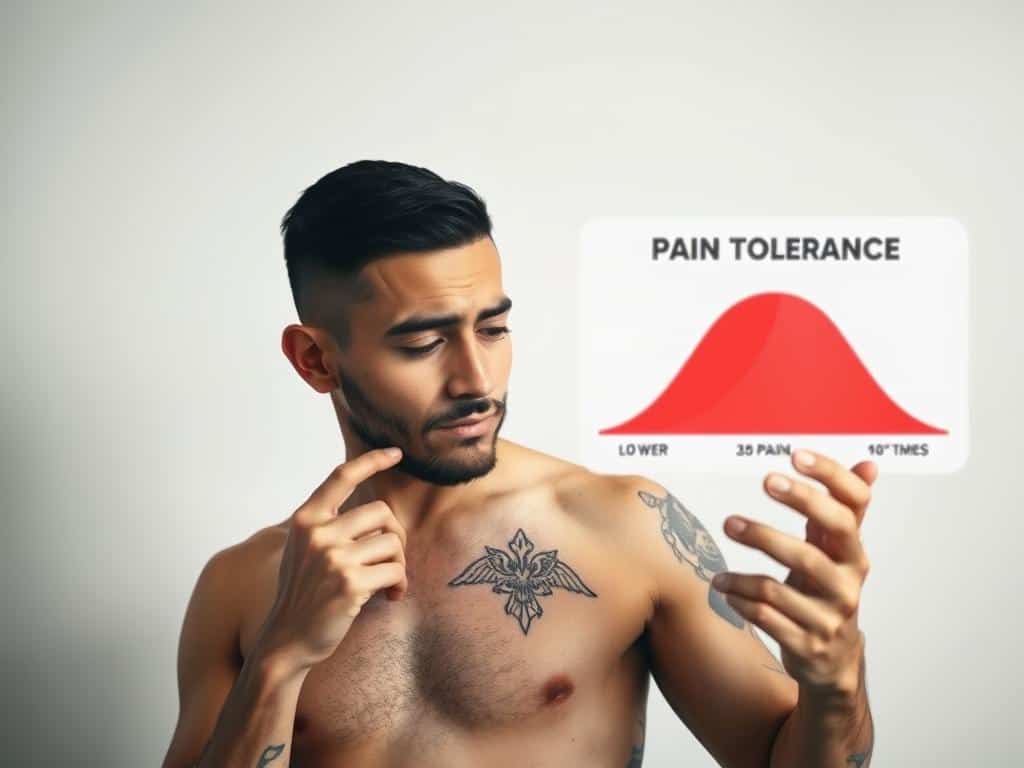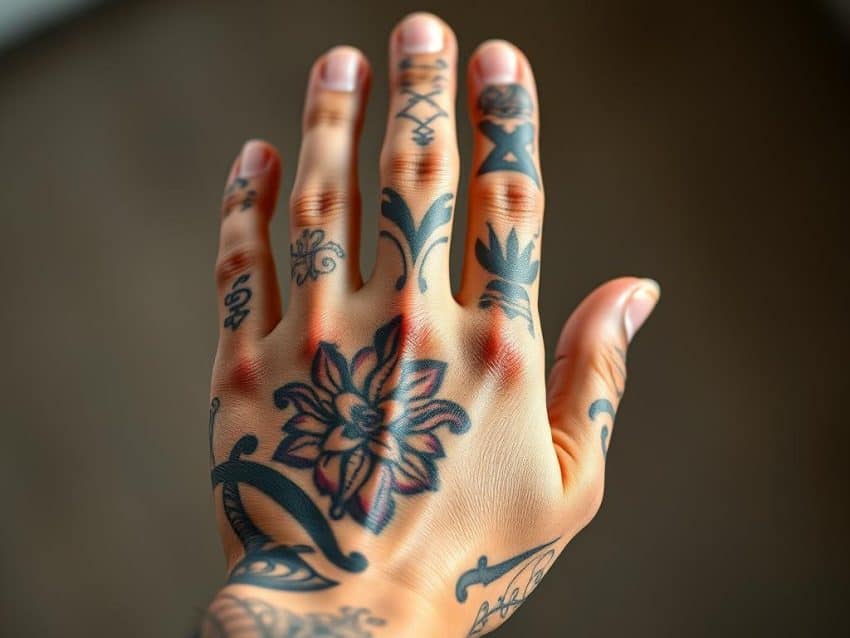When I first sat in the tattoo chair, I felt a mix of excitement and nervousness. I had heard so many stories about tattoo pain. Some said it was a thrilling experience, while others warned of the discomfort.
I knew my tattoo journey would be special, shaped by my pain tolerance, the design, and the artist’s skill. Tattoo pain isn’t just about facing the needle; it’s about embracing the journey. Each tattoo on my skin tells a story, a victory over pain and a part of my life’s narrative.
By understanding and preparing for tattoo pain, I can turn a potentially painful experience into a powerful part of my life.
Looking back, I see that tattoo pain is more than a challenge. It’s a key part of the story told through every line on my body.
Key Takeaways
- The sensation of tattoo pain varies widely, influenced by placement and individual sensitivity.
- Common sensations during tattooing include sharp, dull, and burning pain.
- Less painful tattoo areas usually have thicker skin and more muscle, such as the upper arm and outer thigh.
- Effective pain management techniques can help optimize your tattoo experience.
- Understanding your pain tolerance is key in choosing tattoo placement.
- Consulting with professionals about topical anesthetics can help manage discomfort.
The Nature of Tattoo Pain
Understanding tattoo pain involves looking at different factors. These include personal pain levels, where the tattoo is, and how sensitive the skin is. Some spots on the body are more painful because they have more nerve endings or are closer to bones.
Factors Influencing Pain Levels
Research shows that tattoo locations greatly affect pain. The spine, rib cage, and neck are among the most painful, often scoring a 9. On the other hand, the forearm and outer thigh are less painful because of thicker skin and more muscle or fat.
Some people think less fatty areas are more painful. But, there’s no scientific proof for this.
Common Sensations During Tattooing
Sensations during tattooing vary a lot. I’ve felt sharp, stinging pain in sensitive spots like the inner bicep and knee ditch. These areas score a 6 and 10, respectively.
After the tattoo, I often feel sore for days. Over-the-counter pain relievers like acetaminophen or ibuprofen can help later. But, they might not work as well during the tattooing.
Some people use topical numbing products like lidocaine. But, they should be careful because of possible allergic reactions.
Tattoo Lifestyle and Pain
Choosing the right tattoo placement is key to a good tattoo experience. Different body areas feel more or less sensitive. Knowing where to get inked can make the process less painful.
Less sensitive spots like the outer upper arm and thigh are great for beginners. They let you show off your art without too much discomfort. This makes getting a tattoo more fun.
Choosing the Right Placement
When picking a spot for a tattoo, think about how it looks and how it feels. Some areas, like the ribs and spine, are very sensitive. Others are more comfortable but might not show off your art as much.
Tattoo pain charts can help you find the best spot. They show which areas are less painful. For example, the forearm and outer thigh are good for first-timers because they hurt less.
Understanding Pain Tolerance
Everyone feels pain differently when getting a tattoo. Things like the tattoo’s size, style, and the artist’s skill can change how much it hurts. Longer sessions, like those over two hours, can make it more painful, too.
It’s important to know how much pain you can handle. This helps you prepare for the tattooing process. Knowing what to expect can help you enjoy the experience more.
Preparing for Your Tattoo Session
Getting ready for a tattoo can help you handle the pain better. Drinking lots of water, avoiding alcohol, and not taking certain medicines can help. Being calm and relaxed before the tattoo can also help.
Knowing it might hurt a bit can help you stay positive. You can look forward to this creative journey with a good attitude.

Conclusion
Thinking about my tattoo experience has given me deep insights. I’ve learned how tattoo pain relates to my lifestyle. Knowing how pain works, like where the tattoo is and my own pain limits, makes me feel more ready for tattoos.
Seeing tattoos as part of who I am helps me see pain as a way to create something special. It’s not just about the pain; it’s about making something meaningful.
Getting ready for my next tattoo, I’ll use tips to handle pain better. Drinking water and using creams to numb the skin are good ideas. Also, I’ll think about how my past affects my tattoos. This makes sure each tattoo tells a part of my story.
Research shows tattoos can change us, marking our achievements and strength. This knowledge lets me enjoy the process. It helps me deal with any discomfort while making tattoos that fit my life.
